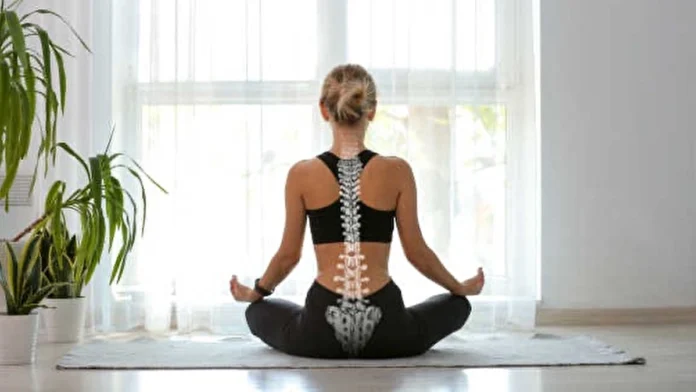Poor posture is a common problem faced by many people today. The comfort of technology, constant sedentary work, and limited movement can disrupt the body’s natural posture and, in turn, lead to numerous health problems. Problems such as distortion of the spine’s natural curve, muscle weakness, and loss of flexibility are the result of poor posture.
You may be wondering, “Is yoga effective against poor posture?” and “Which yoga poses can help correct poor posture?” Indeed, yoga is particularly beneficial for addressing these types of posture issues. It increases flexibility, strengthens muscles, and promotes balanced posture. Let’s take a look at the details together.
What is Posture and Why is it Important?
Posture is the body’s position and the alignment of its skeletal system in various positions—whether sitting, standing, or moving. This position results from the relationship between muscles, bones, and joints. Therefore, posture plays a decisive role in your body’s overall health and function.

Different lifestyle habits and activities have a significant impact on posture. For example, long hours spent at a desk, poor sitting postures, and constantly slumped in a chair can lead to poor posture in the long term. Furthermore, with computer use reaching younger ages, postural problems are becoming more common, even in preschool children.
The aging process is another factor that naturally affects posture. However, unhealthy lifestyle habits and inactivity can accelerate this process and lead to poor posture even in young adults. Even someone in their 30s can experience a loss of energy and negative changes in appearance due to poor posture.
Posture doesn’t just affect appearance; it also profoundly impacts quality of life. Proper posture is crucial for spinal health, balanced muscle structure, and an efficient respiratory system. Conversely, poor posture can lead to muscle pain, respiratory problems, digestive issues, and energy loss. For all these reasons, paying attention to and managing changes in posture is vital for overall health and quality of life. [1]
What Happens in Posture Disorder?
Poor posture can directly affect many systems in the body and lead to various health problems. In other words, poor posture causes misalignment and muscle imbalances. This can lead to discomfort, pain, and disability over time.
Poor posture, in particular, can directly affect the stomach and digestive system. When the body leans forward, it puts pressure on the organs in the upper abdomen. This can cause the digestive system to become compressed and malfunction. This bending also prevents the diaphragm from moving properly. Because the diaphragm is a crucial part of the respiratory system, breathing problems can occur when it cannot move freely.
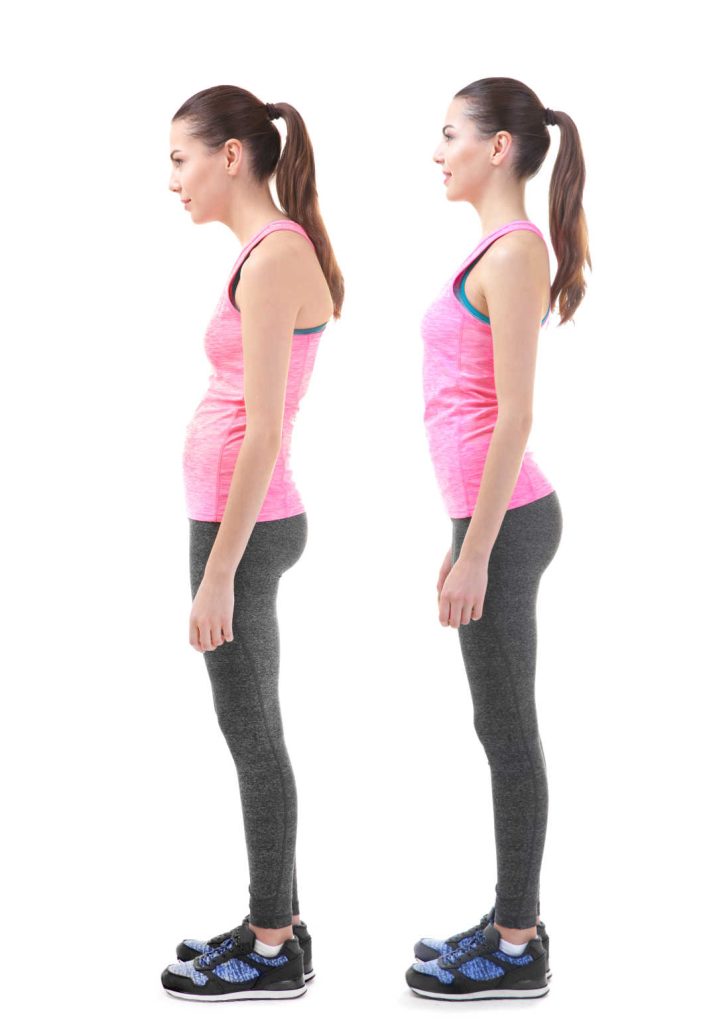
Poor posture can also harm the heart and lungs. With the lungs compressed within the rib cage, the heart cannot function at full capacity. This can negatively impact overall cardiovascular and respiratory health.
Correcting posture allows body systems to function more efficiently by allowing more space for the organs involved. In other words, a more upright posture provides the correct alignment necessary for optimal organ function, resulting in more efficient breathing, better digestion, and overall better health. [2]
The Effect of Yoga on Postures
Yoga, a practice used for thousands of years to balance body, mind, and spirit, can have a significant impact on posture. The various beneficial yoga poses promote proper posture by promoting flexibility and strengthening muscles. Especially when practiced regularly, it can help maintain the natural curves of the spine and correct postural problems.
6 Yoga Poses That Improve Posture
Posture, which refers to the body’s position, is critical to overall health. Poor posture can lead to back pain and headaches, as well as various musculoskeletal problems. Yoga is a highly effective discipline for addressing these issues and maintaining proper posture. Here are six yoga poses that are effective in correcting posture: [3]
Dynamic Supta Urdvha Hastasana (Horizontal Arms Behind Head Pose)
The dynamic Supta Urdvha Hastasana pose is a yoga pose that helps lengthen the body, with arms and legs parallel to the floor. The pose can help improve posture, particularly because it has positive effects on the spine.
Practicing this pose regularly can improve spinal health and strengthen the muscles surrounding the spine, thus protecting against postural problems. The pose stretches and lengthens the muscles, which also increases flexibility and reduces muscle tension. Furthermore, the pose facilitates breathing, allowing you to breathe more deeply and effectively.
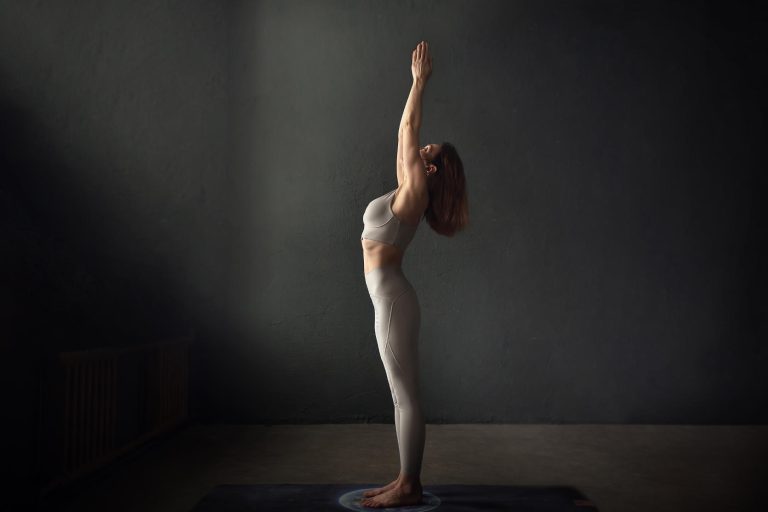
To perform the pose, lie on your back on the floor and extend your arms behind your head. Keep your legs straight, pulling your toes in. Hold the pose for a few breaths. Try to extend your arms and legs as much as possible at the same time. Focus on lifting your chest and abdomen as you inhale. As you come out of the pose, slowly return your body to the starting position. If you experience any pain or discomfort, discontinue the pose immediately. Pregnant women or those with underlying health conditions are especially advised to consult their physician.
Supta Padanghustasana (Supine Leg Stretch Pose)
One of the most effective yoga poses for improving posture is Supta Padangusthasana. This pose can help stretch the legs, reducing tension in the lower back and waist. It specifically works the back and leg muscles, increasing flexibility and helping you achieve better posture.
Supta Padangusthasana stretches the hip, thigh, and calf muscles, reducing tension in these areas. The stretching effect of the pose is particularly beneficial for those who spend a lot of time sitting. It also straightens the spine and strengthens the muscles in the lumbar region, thus protecting against postural problems. It can strengthen leg muscles and improve balance.
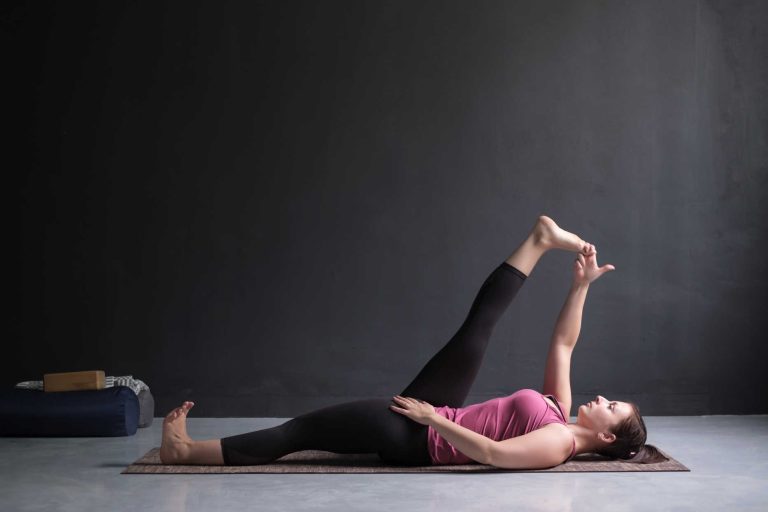
To perform the pose, lie on your back on the floor and lift one leg up. The other leg should remain straight on the floor. Grab your raised leg with your hands and pull it toward your chest. The leg should remain straight and not strained. Hold this position for a few breaths. Then repeat with the other leg. Be careful not to bend your knees or strain your lower back while performing the pose.
Parsva Sukhasana (Side Stretch)
Parsva Sukhasana is a side-stretching pose that stretches the body horizontally. By lengthening the spine and stretching the obliques, the abdominals, back, and shoulders, the pose significantly strengthens these areas. The stretch helps improve posture by supporting proper spinal alignment.
Parsva Sukhasana specifically stretches the intercostal muscles (rib muscles). This expands the rib cage and increases breathing capacity. This pose also releases tension and blockages in the waist, back, and shoulders. While stretching the body, it also strengthens it in a balanced way. This improves body awareness and posture.
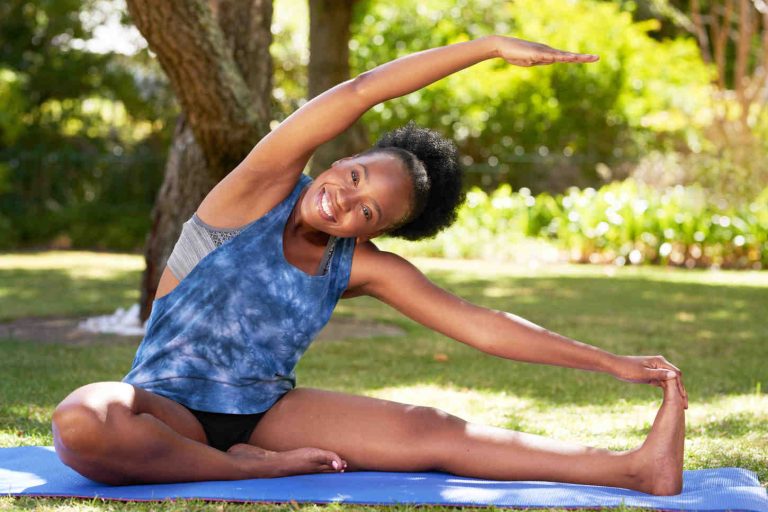
To practice the pose, first sit comfortably and cross your legs. Inhale deeply, and as you exhale, bend to one side. Place your hand on the floor on the side you’re bending over and bring your other hand over your head. Hold this position for a few breaths. Then, switch to the other side and repeat. Be careful not to strain your body while holding the pose. If you experience any discomfort or pain, come out of the pose.
Marjaryasana-Bitilasana (Cat-Cow Pose)
Marjaryasana-Bitilasana, or Cat-Cow Pose, are two yoga poses often practiced together. This combination is extremely effective for strengthening and stretching the spine. These poses work the upper, middle, and lower back, supporting spinal health and improving overall posture.
Cat-Cow Pose allows for stretching on both sides of the spine, thus improving spinal mobility. Combined poses also strengthen back muscles, can reduce back pain, and stretch the muscles surrounding the spine. Regular practice can help prevent back pain by maintaining the natural curves of the spine.
To practice the pose, get on all fours on your hands and knees. Inhale, arch your back and lift your head up (Bitilasana). Exhale, round your spine, tucking your chin toward your chest (Marjaryasana). Repeat the movements slowly and fluidly, inhaling and exhaling. As you practice the poses, make sure your spine gently stretches with each movement and avoid straining between movements. [5]
Salabhasana (Locust Pose)
Locust Pose, also known as Salabhasana, is a yoga pose that strengthens the back, legs, and arms. The pose also helps promote proper posture by lengthening the spine.
Salabhasana strengthens the lower back and stretches the muscles in the upper back. This can help relieve back pain. It also strengthens the abdominal, hip, and leg muscles. The pose supports the lower spine, improving posture and enhancing balance. Regular practice can positively impact overall posture, as it helps align the back.
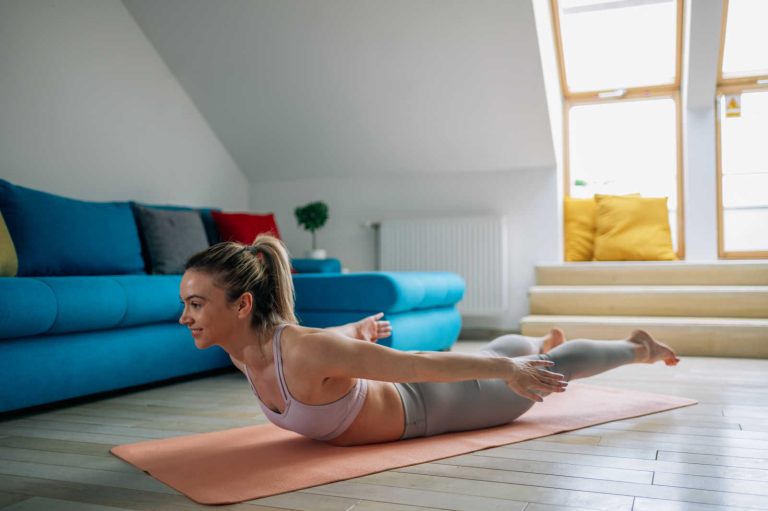
To perform the pose, lie face down with your arms at your sides. Keep your chin on the mat. Inhale as you lift your legs and upper body off the floor. Keep your legs together and use your inner thighs to reach your feet upward. Extend your arms back, palms flat on the mat. Inhale and exhale in this position for a few breaths. Then, slowly return to the starting position.
Supported Backbend
Supported backbend pose, a pose that specifically corrects posture problems in the upper body, strengthens the spine, opens the chest muscles, and retracts the shoulders. This pose helps achieve proper posture. The pose is particularly effective at stretching and strengthening the back and chest muscles, which can help correct the forward-slumped shoulders often seen in desk workers. By strengthening and stretching the spine, the pose can contribute to back health and improve posture. It can also expand the rib cage, increasing breathing capacity.
To perform the supported backbend pose, first sit on a support such as a yoga block or pillow. Extend your arms to the sides and place your hands on the floor, palms facing up. Take a deep breath. As you exhale, extend your chest up and back. You can gently let your head drop back. Take a few deep breaths in the pose, then slowly return to the starting position. [4]
Proper posture not only reflects a person’s confidence and strong personality, but it’s also a critical element for overall health and well-being. Because good posture affects many bodily functions, it can have a significant impact on quality of life. In this context, yoga practice can be a powerful method for improving posture.
Yoga poses are specifically designed to counteract the tendency for a collapsed back, a consequence of our modern lifestyle. Poses that strengthen the spine and, consequently, the surrounding muscles, promote optimal back alignment, helping you achieve optimal posture.


